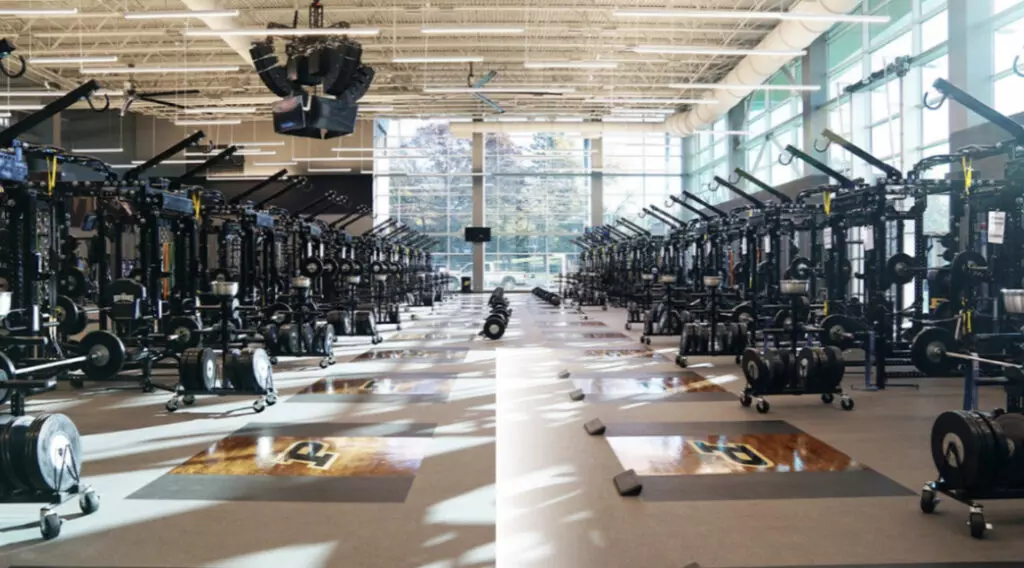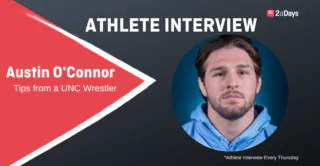On May 20, the NCAA gave the green light for athletes in all sports to start voluntary workouts beginning June 1. As a former Division 1 athlete, hearing the term “voluntary workout” always makes me laugh—plenty of athletes know that voluntary workouts are all but mandatory, because if you don't put in the work when your coaches aren't looking, you risk getting an earful about it from your coaches and teammates, or even losing your starting job or scholarship in extreme cases. Now, as someone who currently studies NCAA policy, the term is also sobering, because a close look at the NCAA's rulebook reveals that voluntary workouts are not only non-optional, they are also unethical and unsafe.
What is a voluntary workout? Bylaw 17.02.19 in the NCAA's 2019-2020 Division 1 Manual defines voluntary athletically-related activities (e.g. “voluntary” workouts) as a sport-related activity that occurs under the following conditions:
· The athlete must not be required to report back to a coach or other athletics department staff member (e.g., strength coach, trainer, manager) any information related to the activity, and no members of the coaching staff or athletics department may report practice activities back to coaches.
· The activity must be initiated and requested by athletes, and participation may not be required by the institution or any member of the coaching staff. However, athletics department staff members may provide information to athletes related to voluntary activities (e.g. when a trainer will be in the training room, or what times the weight room will be open on a Sunday afternoon, for example). Coaches can also assign days and times for athletes to use facilities.
· The athlete's participation in the activity (or lack thereof) may not be recorded.
· The athlete may not be subjected to penalty if he or she elects not to participate in the activity, and they can't be incentivized for participating, either.
· A final stipulation is that coaches may be present (but are not required to be present) during certain skill-related instruction, as well as conditioning sessions.
On the surface, it might not look like “voluntary” workouts are all that bad. Athletes can't report their activities back to coaches, coaches can't rat out their athletes for not participating, and athletes must request the workout. Participation in a voluntary workout, or lack of participation can't be recorded, and such participation is neither punishable or rewardable. Plus, coaches can be present, so that has to mitigate the risk, right? Unfortunately, there is much more to voluntary workouts than meets the eye, and it requires a much deeper dive into how this policy plays out in reality.
First, although athletes aren't required to report back to coaches, after a voluntary practice, there is no rule prohibiting coaches from requiring team captains to report what took place during a voluntary practice. Even if there were a rule against this, some research suggests that athletic teams are uniquely susceptible to peer influence, and desires to conform(and athletic hazing statistics would support these findings, as over half of college athletes admit to being hazed, compared to only 5% of non-athlete students). Therefore, athletes themselves can create a climate of peer control, and push themselves to train too hard, or work through injuries for the sake of completing a “voluntary” workout, thanks to this policy loophole.
Second, although the rule requires for workouts to be initiated by the athletes, this is not necessarily how it happens in real-life. I was a Division 1 distance runner in college, and during that time, I had a coach who liked us to cross-train in the campus pool most Sundays for extra cardio. In college, I loved running, but I hated swimming, and I never asked for a pool workout once in the five years I spent in the NCAA. However, when I saw pool workouts on my training schedule, I knew I had to get it done, so I was in the pool nearly every weekend, even though they were “voluntary” practices. I'm not alone in my experiences, either. Former UCLA football player, and current National Collegiate Players' Association president, Ramogi Huma once coined the term “volundatory” to describe the nature of voluntary workouts, which he notes “were mandatory in everything but their name.” During Huma's time at UCLA, his “volundatory” practices were technically organized by team leaders, but coaches encouraged attendance, and received reports on who was there and who was not, thus blurring the lines of who was really running these practices, and whether or not they were truly voluntary.
Third, the fact that athletic participation (or lack thereof) cannot be recorded might seem like it provides athletes with some leverage. If coaches can't log practice hours when they're voluntary, it gives athletes more freedom, right? Not quite. Because this is where the 20-hour rule comes into play. Under bylaw 17.1.7.1 of the Division 1 Manual, an athletes' participation in athletic-related activities is limited to four hours per day, or twenty hours per week. However, the 20-hour rule only pertains to mandatory practices, such as full-team workouts, competitions and film sessions. Voluntary practices do not count toward the 20-hour limit at all, which sets athletes up for overtraining and burnout, and it's one of the reasons the 20-hour rule is rarely violated, even though the limit is commonly exceeded—it is impossible to accurately measure or enforce, just like voluntary workouts in general.
Finally, although coaches and trainers may be present during voluntary workouts, their presence is not mandatory, and this poses a safety risk for athletes. In their book, Indentured: The Inside Story of the Rebellion Against the NCAA, sportswriters Joe Nocera and Ben Strauss chronicle a lengthy history of athletes who have died of preventable deaths, such as asthma attacks and heat strokes, during voluntary workouts. The nature of voluntary workouts also poses specific risks to female athletes, who may have to go for a run, or head to the gym alone in the early morning or late evening, if those are the only time of day they can fit a session in (a situation I found myself in numerous times as a college athlete). Although assaults of female athletes are widely reported, and Indentured was published in 2016, the NCAA has yet to provide college athletes with any meaningful updates to their voluntary activity policies that could protect athletes from such harm.
Here's where voluntary workouts get really interesting, and not in a good way. If you have been following the NCAA through the coronavirus pandemic, you might have noticed that the NCAA banned virtual workouts in April, and a close reading of the NCAA's voluntary activity policy might help you understand why.
Virtual workouts were not “voluntary,” but coaches and trainers could not physically be present should their athletes have gotten hurt, or needed medical attention. My take is that the NCAA banned such workouts because they posed liability issues, simply because they were not “voluntary” in nature. However, the structure of virtual workouts look very similar to the reality of “voluntary” workouts, namely because athletes were training largely by themselves. But virtual workouts are different (and uniquely dangerous) for one key reason. If an athlete were to sustain an injury during a virtual workout, universities, coaches, and quite possibly, the NCAA, could have gotten into legal trouble because virtual workouts were not intended to be optional.
That, in short, is the problem with “voluntary” workouts. The NCAA knows they are problematic, unsafe, and unethical, but refuses to change a faulty policy that harms its athletes.
For more NCAA policy insights, follow Katie Lever on Twitter and Instagram: @leverfever
* Originally published on June 11, 2020, by Katie Lever, Ph. D







